
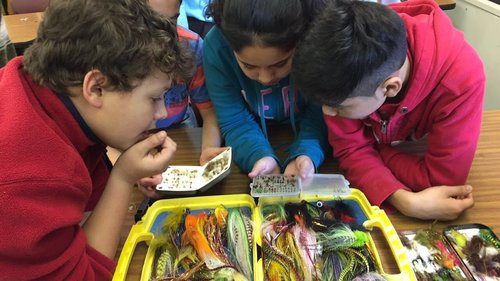
Learning about Amphibians & Aquatic Insects
BRDC has been busy with education programs, working with Galax Middle School, Fries School, Fairview Elementary, Grayson Highlands, Independence Elementary.
Grayson County's fourth grade students participated in the Natural Heritage Program with an emphasis on salamanders, toads, and frogs. Students learned about salamanders commonly found in the Blue Ridge.

Galax After School Field Trip
Students in Galax Middle School's After School Program are learning about Primitive Technology this month. At the beginning of the week, students discussed the meaning of primitive technology and experimented with different pottery techniques.

Galax Enrichment Week Begins!
Students from Galax Middle School take a break from the classroom and have the opportunity to get outdoors and discover the natural world!

Galax Students enjoy American Chestnut Celebration
BRDC took eight excited and enthusiastic young ladies from Galax Middle School to learn about the American Chestnut tree and enjoy the festivities.
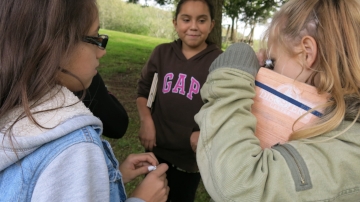
Galax Middle School Studies Leaves, Invasive Plants and the American Chestnut
Students from Galax Middle School travel to Matthews State Forest to learn about the forests of the Blue Ridge.
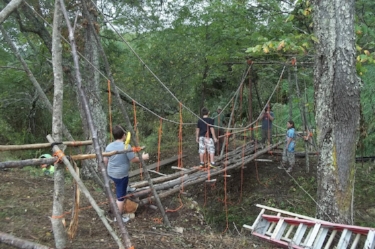
Galax Intersession Suspension Bridge Construction
Galax Middle School Students spent a fun week constructing a suspension bridge!
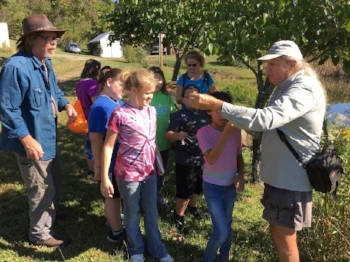
Galax Middle School Explores Dunson Farm
On Saturday, September 24th, an enthusiastic group of Galax Middle School students visited Bill and Margaret Dunson’s Baywood farm just a few miles west of Galax. The Dunsons bought this farm with the intention of converting it from agricultural use to a wildlife resource, with improving bird habitat as the guiding principle. They have returned fields to a more natural sequence of seasonal grasses and wildflowers with an emphasis on native plants. A series of small ponds dot the landscape, some with fish and some without, to demonstrate the impact fish have on various aquatic insects and to illustrate the contrasts.

Galax After School Enrichment Kick-off!
Galax Middle School opened its doors to students and their families for the After School Enrichment Program kick-off dinner.
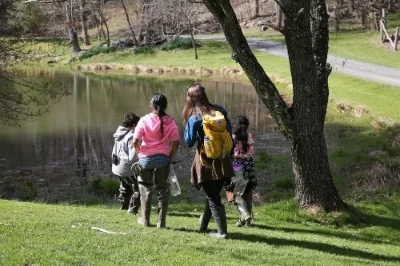
Galax Enrichment Pond Exploration
Galax Middle School students explored a nearby pond last Friday, as part of BRDC's Galax Enrichment program. The students had a great time building salamander traps and searching for frogs- they discovered spring peepers and eastern newts.

Galax Enrichment Week - Give Me Shelter
For BRDCs Give Me Shelter course, students built and installed nest and roosting boxes for owls, bats, ducks and bluebirds. They learned about nesting strategies, comparing the enormous variety of bird and bat nests, and the importance of incorporating features preferred by the particular bird species, including the entrance hole size, the height at which the box is posted, and the type of habitat surrounding the box.

Galax Enrichment Week - Build A Beast
BRDCs Build A Beast course taught students the principles of physics and mechanics while building a mechanical walking "beast" operated by pedal power.

Galax Enrichment Week - Primitive Technology
BRDC recently hosted a Primitive Technology course as part of Galax Middle School Enrichment Week. The students were engaged with a variety of hands-on activities that connected them to skills used by early American Indians and materials found in their backyards.

Blue Ridge Illustrated: Oaks of Matthews State Forest
14 students spent two hours in the field defining the difference between the bark, acorns, leaves and tree structure of six species of oaks in the forest while effectively blocking out the myriad of other species in the forest. Their investigative efforts began the latest BRDC poster: The Oaks of Matthews State Forest.

Educational resource planted last Fall shows us life!
Last fall, BRDC, led by Sarah Osborne, planted a brand new butterfly garden on the grounds of the Galax High School as part of the Fall 2014 Middle School Enrichment Program. The results a year later are astounding!

Galax Middle School, Fall Enrichment Program
During the week of September 29th, BRDC got the opportunity to expose Galax Middle School students to two great hands on programs: Hands In the Dirt and National Fishing in the Schools Program.